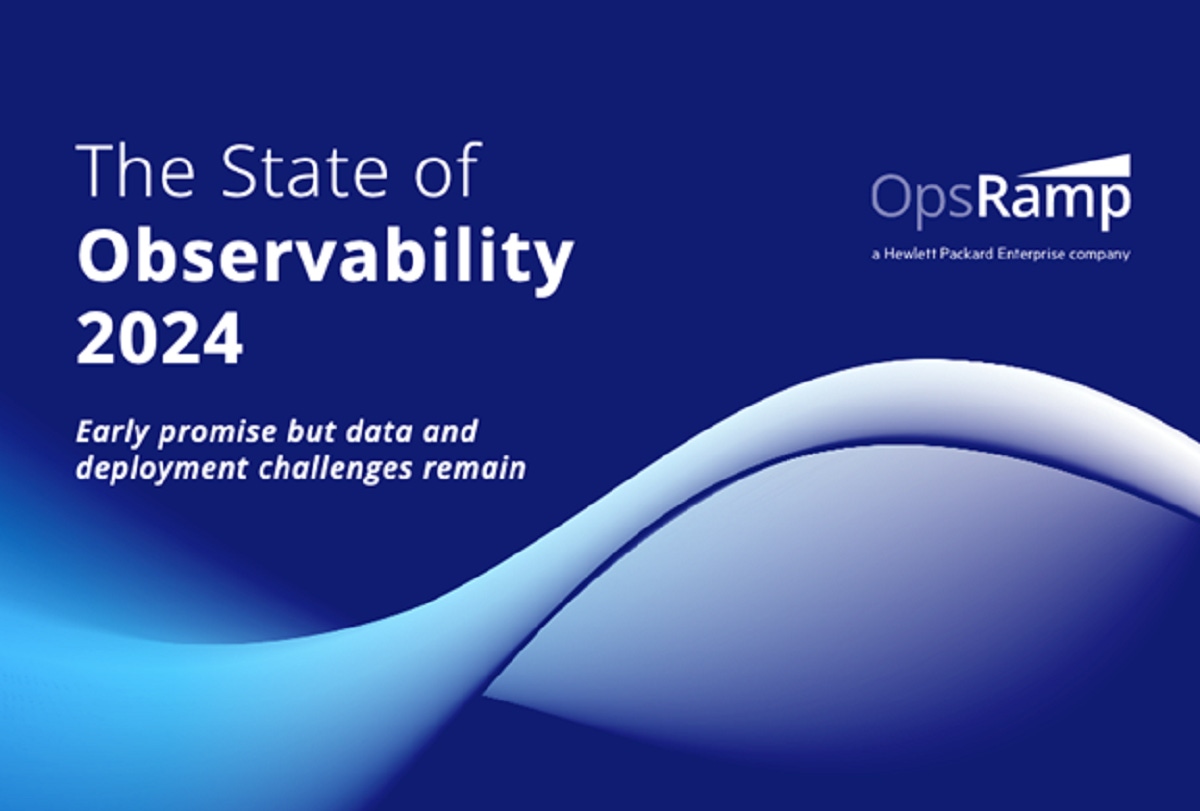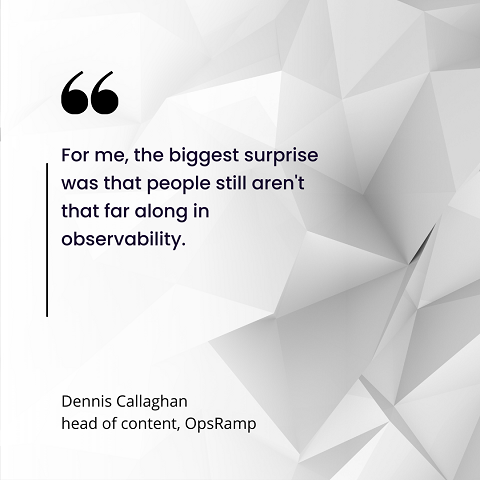Observability Shows Promise, but Data Challenges Hinder AdoptionObservability Shows Promise, but Data Challenges Hinder Adoption
An HPE OpsRamp report reveals early promise and challenges in observability adoption.

A new report from OpsRamp, a Hewlett Packard Enterprise (HPE) company, sheds light on the current state of observability in IT operations.
OpsRamp's "State of Observability 2024" report, based on a survey of 603 IT decision-makers, highlights the early stages of adoption, key focus areas, and the challenges organizations face in implementing observability solutions.
Key findings from the report include:
• 56% of organizations are still exploring use cases or piloting observability solutions, while only 24% have implemented full-stack observability across 90% of their organization.
• 61% of respondents are focusing on cloud and cloud-native observability solutions.
• 57% cite data management and storage as their primary concern, with 63% experiencing related challenges during deployments.
• 59% report discovering previously unknown performance issues, and 58% detect and respond to problems before users are impacted.
• 67% target network performance monitoring (NPM) tools for replacement with observability solutions.
"For me, the biggest surprise was that people still aren't that far along in observability," Dennis Callaghan, head of content at OpsRamp, told ITPro Today. "The industry has been talking about observability a lot for the last seven or eight years at least, and yet more than half of our respondents were still only at the initial evaluation (30%) or pilot (26%) level."
What Are the Primary Challenges to Adopting Observability?
Data management and storage stand out as the most significant concerns and challenges in observability deployments.
Fifty-seven percent of respondents cite this as their primary concern, with 63% experiencing related challenges during their deployments. Organizations grapple with the volume, complexity, and effective analysis of the data generated.

"Observability tools generate a lot of data," Callaghan said. "Storing, managing, cleansing that data, figuring out how long you're going to retain it, is something organizations are clearly wrestling with."
Callaghan also noted that data storage can get expensive, though for now, cost seems to be more of a concern than an active challenge, perhaps because observability deployments are still fairly small.
Benefits and Tool Consolidation
Despite the challenges, organizations are already realizing tangible benefits from their observability deployments. Fifty-nine percent report discovering previously unknown performance issues, while 58% can detect and respond to problems before users are impacted. MSPs consistently report higher levels of benefits compared with enterprises.
Observability is also driving tool consolidation, with 67% of organizations targeting NPM tools for replacement. This suggests a shift toward proactive and holistic network management enabled by observability's deeper insights.
How to Make Meaningful Observability Improvements
When looking to make improvements in the state of observability Callaghan has a few recommendations.
Based on the survey results, he suggests that cloud and cloud-native environments are the best place to start and probably an area where most organizations have the least amount of visibility today.
"Start small, work your way up to full-stack observability, but no need to boil the ocean all at once," Callaghan said. "Show the early value of limited deployments, then make additional investments."
About the Author
You May Also Like








.jpg?width=700&auto=webp&quality=80&disable=upscale)
